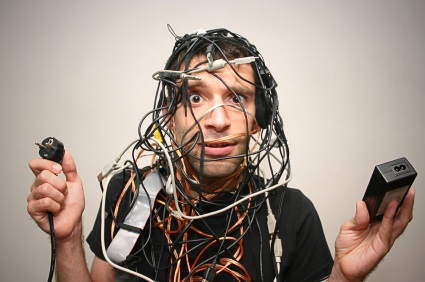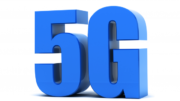Even if you’re no scientist, you know that color has an effect on the brain. Color’s association with emotion is baked into our language. You can be blue if you’re sad, green with envy, see red if you’re angry, and so forth. But, scientists have only learned in the last few decades that there is a scientific basis to the way color affects the way we behave.
In an effort to help employees feel more refreshed, workplaces in the late 20th and early 21st century started adopting full-spectrum lighting. Traditional fluorescents, which give off a greenish-brown light without a lot of blue to it, had a demonstrated effect in making people feel more fatigued. Full-spectrum light, which more closely mimics daylight, has been proven time and time again to make people feel more alert, and even more satisfied.
We’re not sure why this happens, but we can guess
It’s important to remember that humans have been around a lot longer than human civilization. The first homo sapiens appeared 300,000 years ago. There’s some evidence to suggest that earlier hominids were just as intelligent as we are. Yet, depending on what your criteria are, you can say that human civilization has only been around for roughly 20,000 years. Even more important, the use of artificial lighting of any kind — even gas lanterns — has been with us less than 300 years. Electric lights have been brightening our skies for slightly over 100 years. Modern LEDs were first commercially produced only about 60 years ago. In other words, most of human history has been governed by the sun and by campfires.
It makes sense that we would evolve to instinctively respond to sunlight and firelight in different ways. Sunlight heralded the time to fight, to farm, to eat, and to communicate. Firelight indicated time to be less active. “Night owls” respond to sunlight and firelight the same way as “early birds.” It’s baked into who we are.
The light coming off our device screens is very similar to sunlight. The same devices in “night mode” more effectively simulate firelight. Our brains react to color on our artificial lights the same way they have to natural light for hundreds of thousands of years.
The use of color on computer and device screens
You hardly need me to tell you that starting about 2010, people made that palm-sized screen the last thing they looked at before going to sleep and the first thing they looked at in the morning. At this point there had already been studies on the effects of television watching on sleep cycles. Cell phones made the matter exponentially worse.
Cell phone screens have always tended to be a little more blue than incandescent lights. There’s a definite correlation between blue light and sleeplessness. That’s why most devices, even Windows PCs, have some sort of night light mode which tints all the color more orange. This helps people be less affected by their device’s light, and helps them sleep.
However, you can do the opposite if you want to tweak your brain chemistry to be more alert in the morning. It’s not necessarily as good as a strong cup of coffee, but it’s certainly helpful.
Here’s what you do
If you are someone who wants to be more alert in the morning, put as much “sky blue” in front of your eyes as possible. Change your screen background to be blue. Choose blue themes for your browser and your office apps. If your keyboard or laptop supports RGB lighting, change it to pale blue.
For myself, I use this screen background.

Feel free to download it and use it yourself. I lay no claim to it. It’s actually the default screen background from MacOS 10.4, which was in vogue back in the mid-’00s. I always liked it and I found it on some wallpaper site. I’ve been using it for about four years. I find the blue background helps me get in the right frame of mind in the morning.
I’ve found that since I made my workspace more blue, I feel more alert and ready to face the day. Maybe it’s all in my head. I do know that studies have shown over and over again that blue light makes people feel less sleepy. So whether or not I’m just fooling myself or whether or not it’s affecting my brain chemistry doesn’t matter. It works for me.
Feel free to game the system your own way
Personally, I work morning to evening, and there are several hours between the time I log off my computer and the time I go to sleep. So, the blue background works for me. On the other hand, if you’re the sort of person who starts late and works until it’s time to go to bed, choose a golden or orange background and color the things around you with “earth tones.” Research has shown that it should help you transition to sleep much more easily.





